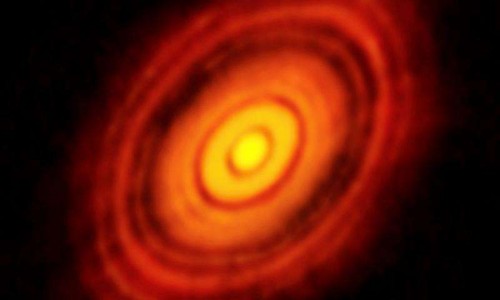
Researchers from the University of Toronto have offered first-ever proof of a planetary system under formation.
The team led by Daniel Tamayo found that circular gaps in a disk of dust and gas swirling around the young star HL Tau are, in fact, made by forming planets.
“HL Tau likely represents the first image taken of the initial locations of planets during their formation. This could be an enormous step forward in our ability to understand how planets form,” Tamayo said.
The image of HL Tau was taken by the state-of-the-art Atacama Large Millimeter/submillimeter Array (ALMA) located in Chile’s Atacama Desert.
While those who observed the original image claimed that planets were most likely responsible for carving the gaps, some remained skeptical.
Tamayo’s study is the first to suggest the gaps are evidence of planetary formation because the gaps are separated by amounts consistent with what’s called a special resonant configuration.
In other words, these planets avoid violent collisions with each other by having specific orbital periods where they miss each other.
“It is similar to how Pluto has avoided Neptune for billions of years despite the two orbits crossing one another,” the team wrote.
The HL Tau system is less than a million years old, about 17.9 billion km in radius and resides 450 light years from the Earth in the constellation Taurus.
While the HL Tau system remains stable in its relatively young age but after billions of years, it will act as a “ticking time bomb”.
Eventually the planets will scatter, ejecting some and leaving the remaining bodies on elliptical orbits like the ones found around older stars.
“If further observations show these to be the typical starting conditions around other stars, it would reveal our solar system to be a remarkably special place,” Tamayo said.
The findings are set to appear in the upcoming edition of Astrophysical Journal.